 |
| March 14, 2023 | Volume 19 Issue 10 |
Designfax weekly eMagazine
Archives
Partners
Manufacturing Center
Product Spotlight
Modern Applications News
Metalworking Ideas For
Today's Job Shops
Tooling and Production
Strategies for large
metalworking plants
U.S. Army tests cutting-edge heavy-duty airdrop system
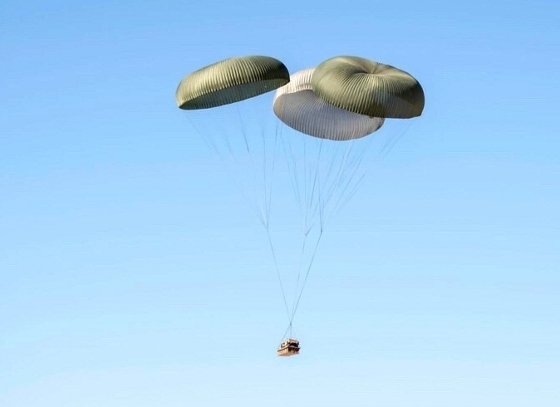
The Rapid Rigging De-Rigging Airdrop System (RRDAS) promises to get Soldiers out of a drop zone and into the fight with the equipment they need faster than ever. [Photo credit: U.S. Army]
By Mark Schauer
In a combat theater, ground troops in the most isolated areas depend on airlifts for resupply. In the worst conditions, time can be a matter of life or death.
U.S. Army Yuma Proving Ground (YPG) in Arizona is home to all manner of parachute testing, with spacious and instrumented ranges large enough to accommodate even the world's largest cargo parachutes.
YPG has long been on the cutting edge of developmental and operational testing of new airdrop capabilities, including the Rapid Rigging De-Rigging Airdrop System, or RRDAS, which promises to get Soldiers out of a drop zone and into the fight with the equipment they need faster than ever.
Conventional cargo payloads are typically cushioned with a honeycomb-like cardboard material between the vehicle or other heavy item and the steel palette that carries it from an aircraft to the ground. Even with good cargo parachutes and a perfect landing, multiple layers of the honeycomb will collapse upon impact with the ground.
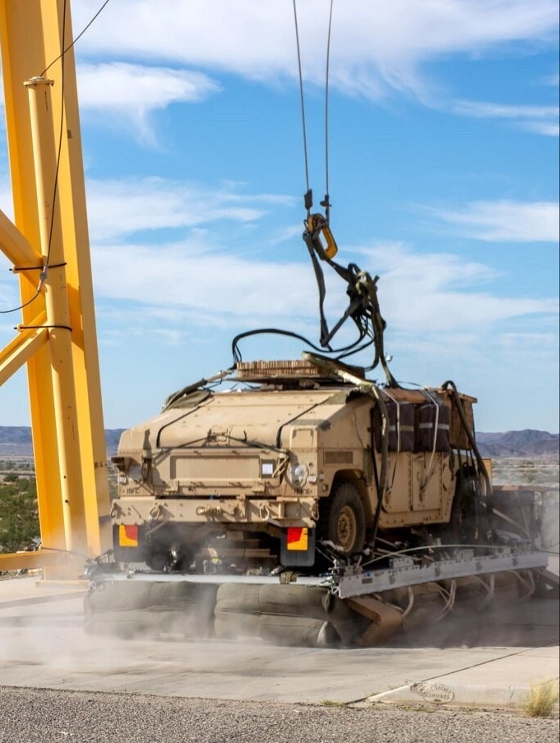
The RRDAS dramatically reduces the amount of honeycomb necessary to dissipate the force of impact by using 10 reusable airbag modules. [Photo credit: U.S. Army photo by Mark Schauer]
RRDAS, however, dramatically reduces the amount of honeycomb necessary to dissipate the force of impact by using 10 reusable airbag modules. The self-inflating airbags can be utilized as low as 750 ft above ground level and carry loads from between 5,000 and 22,000 lb.
"When it flies through the air, ambient air pressurizes all of the fabric-based airbags," said Maj. Matthew Rohe, assistant product manager for Cargo Aerial Delivery at the U.S. Army Program Executive Office Combat Support and Combat Service Support. "When it hits the ground, the airbag modules cushion the payload, so we don't need as much honeycomb as in the current design."
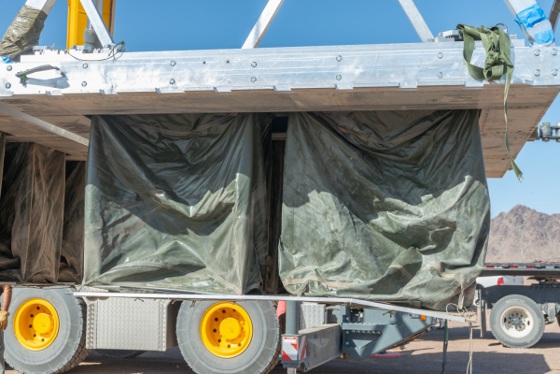
A vehicle is loaded onto the ATAX platform with an under-mounted airbag system. The airdrop system has significant advantages over traditional systems, because it uses reusable airbags to soften the impact when the vehicle lands. (Shown here during platform drop testing.) [Photo credit: U.S. Army photo]
The reduced use of honeycomb should lower rigging time by 25%, but testers are particularly excited about reducing de-rigging time by 40%, which gets Soldiers out of harm's way faster.
"The end state is that it will reduce the de-rigging time by about two-and-a-half hours, primarily through the reduction of the use of [cardboard] honeycomb, so Soldiers on the drop zone won't have to use axes, shovels, and picks," said David Emond, operations manager for Product Manager Force Sustainment Systems. "Currently, once the vehicle crushes the honeycomb, Soldiers have to cut out all the honeycomb around the vehicle's tires to be able to drive it off."
The system also boasts features to ensure an airdropped vehicle will land upright.
"The system has deployable outriggers on it," said Rohe. "If it is a high-center-of-gravity load with a chance of tipping over when it hits the ground, these outriggers kick out and will stop it from flipping over."
Though developmental testing of RRDAS is scheduled to end later this year, and full fielding of the system to troops is expected in Fiscal Year 2025, intermittent testing at YPG based on feedback from operational testing at Fort Bragg, North Carolina, should continue for two years after that.
"We will be able to increase the load of the payload and the length of the platform so we can drop heavier and longer items," said Rohe. "We'll be testing on and off at Yuma for several years to come."
YPG is the Army's primary personnel and cargo parachute tester, with decades of institutional knowledge in both rigging and evaluating these complex airdrop systems, as well as coordinating multiple sorties safely. The post's nearly 2,000 square miles of restricted airspace and favorable weather make it an ideal location for airdrop testing.
"We always use YPG, because of the test assets available," said Emond. "It is safer and cheaper to conduct developmental testing here. It is the most reliable and dependable place to get the aircraft that we need to fly test missions."
Designfax Editor's Note: The U.S. Army RRDAS is being tested in conjunction with the newly developed, off-the-shelf prototype ATAX land airdrop system, which is manufactured by UK-based company IrvinGQ.
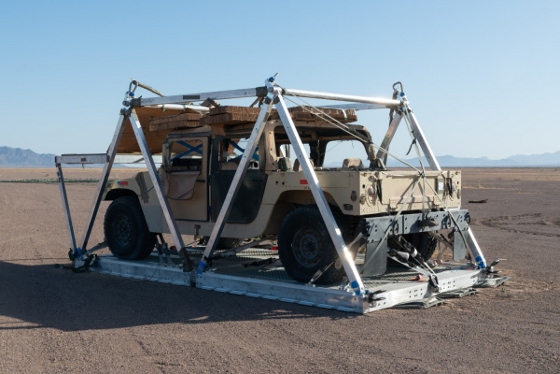
The ATAX airdrop system is modular and consists of 8-ft platforms connected by hinges. [Photo credit: U.S. Army photo]
According to the U.S. Army, "The ATAX airdrop system is modular and consists of 8-ft platforms connected by hinges. It can be adapted to different lengths, typically between 8 and 32 ft, and it is surrounded by a self-contained structure where the parachutes are mounted and attached. The vehicle is loaded onto the ATAX platform with an under-mounted airbag system.
"In a typical low-altitude airdrop, it takes between two to three minutes for the vehicle to drop from a height of 1,500-2,000 ft. Airdrop systems can weigh up to 42,000 lb, including the payload and airdrop equipment."
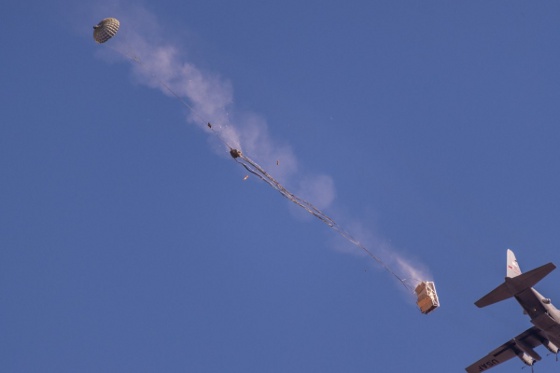
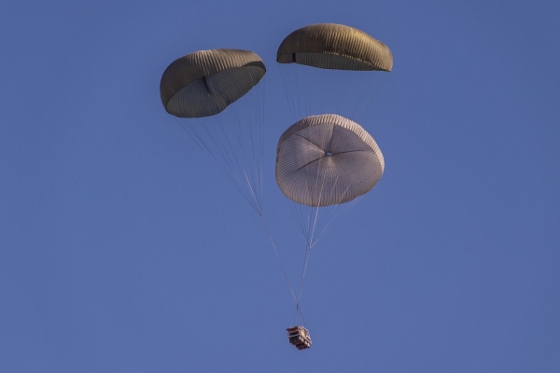
The ATAX airdrop system during testing at YPG. [Photo credit: U.S. Army photo]
Published March 2023
Rate this article
View our terms of use and privacy policy
